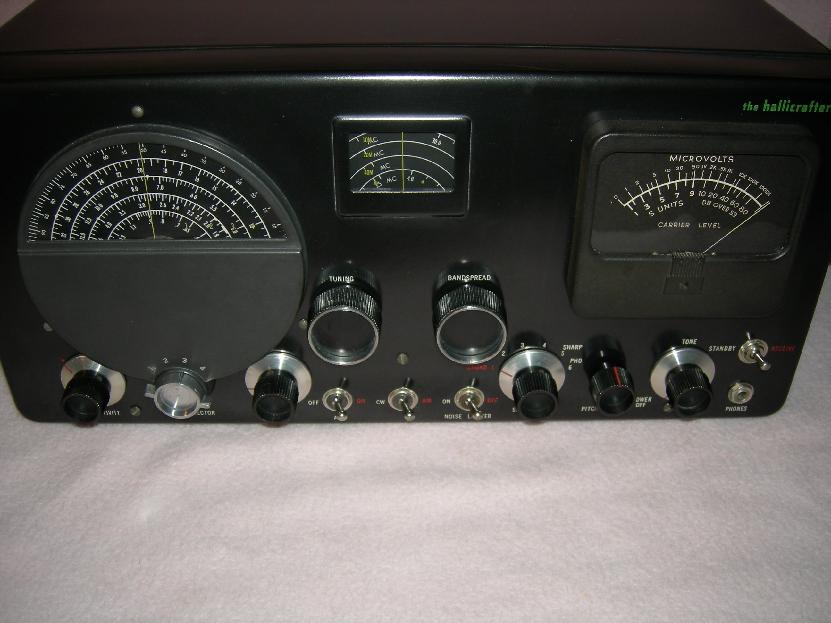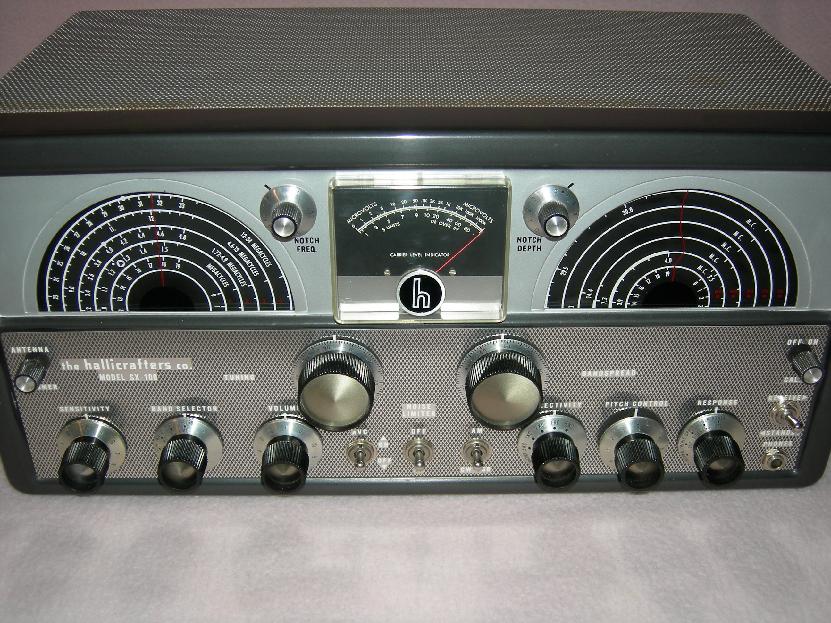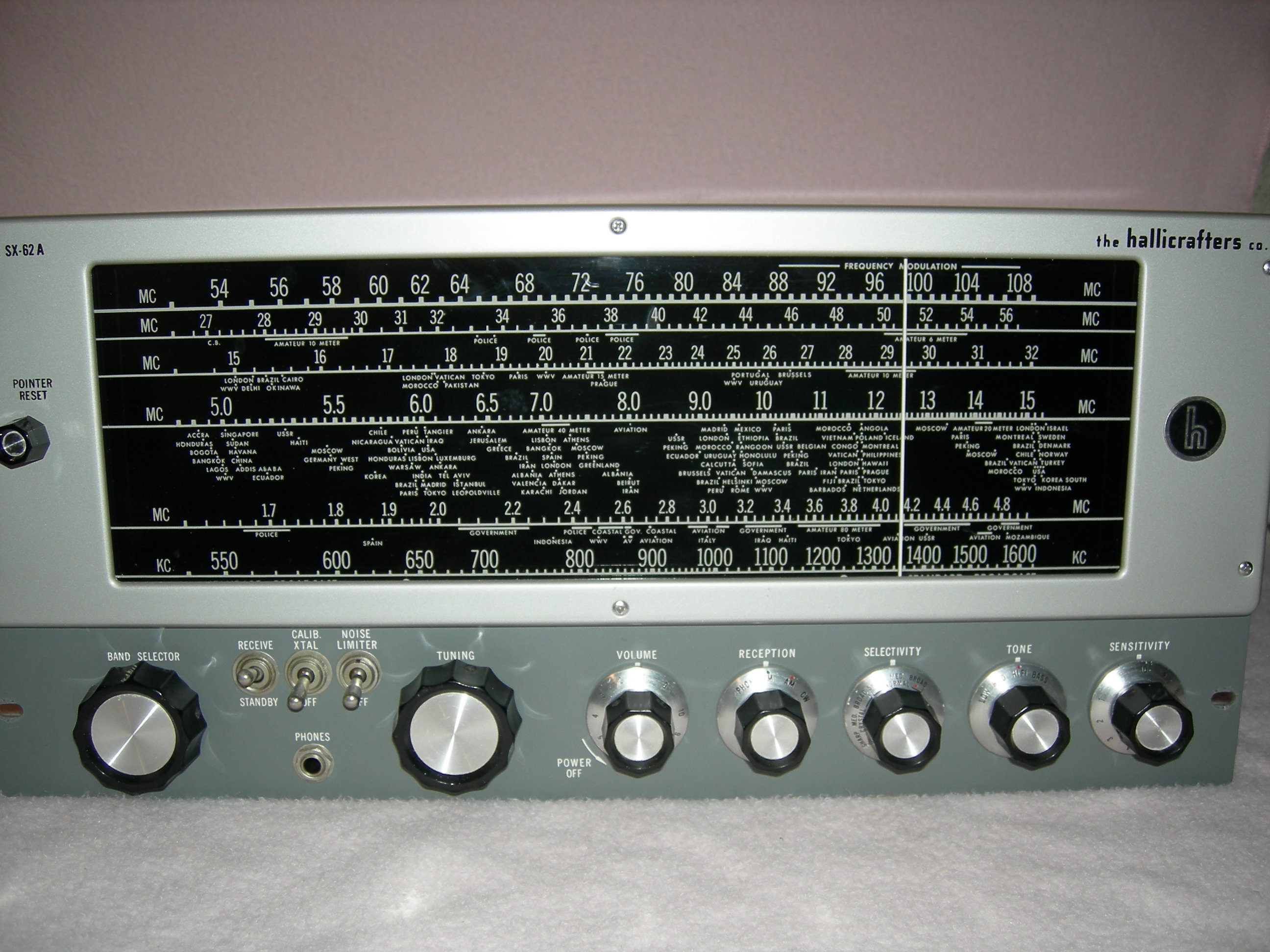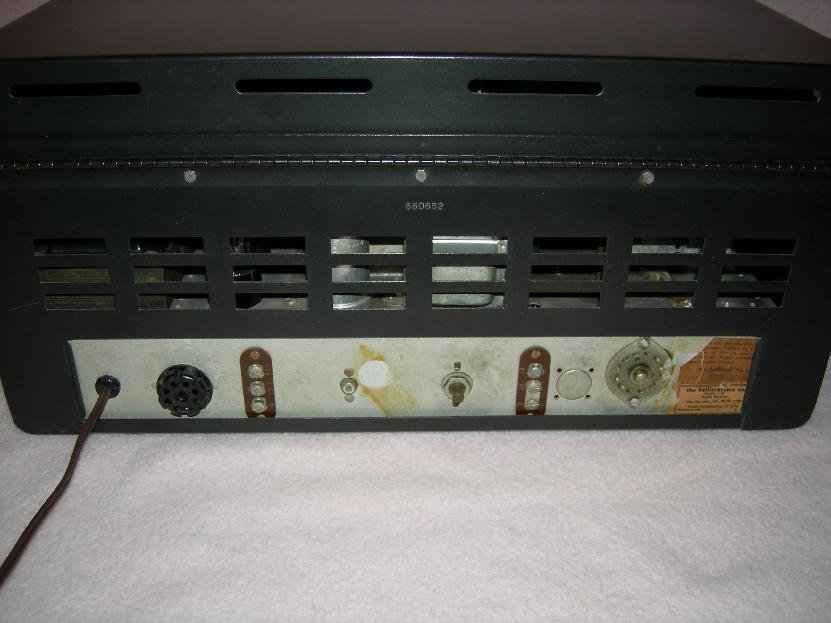
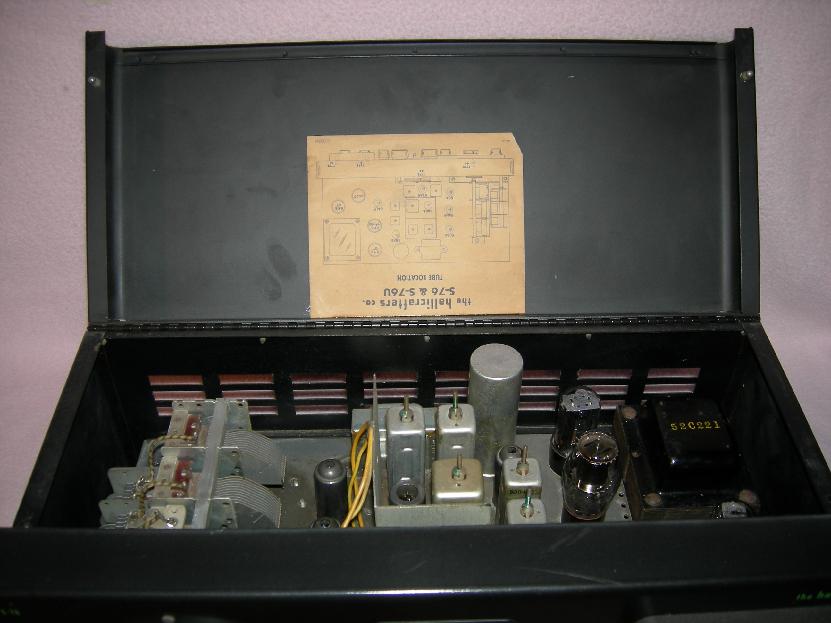
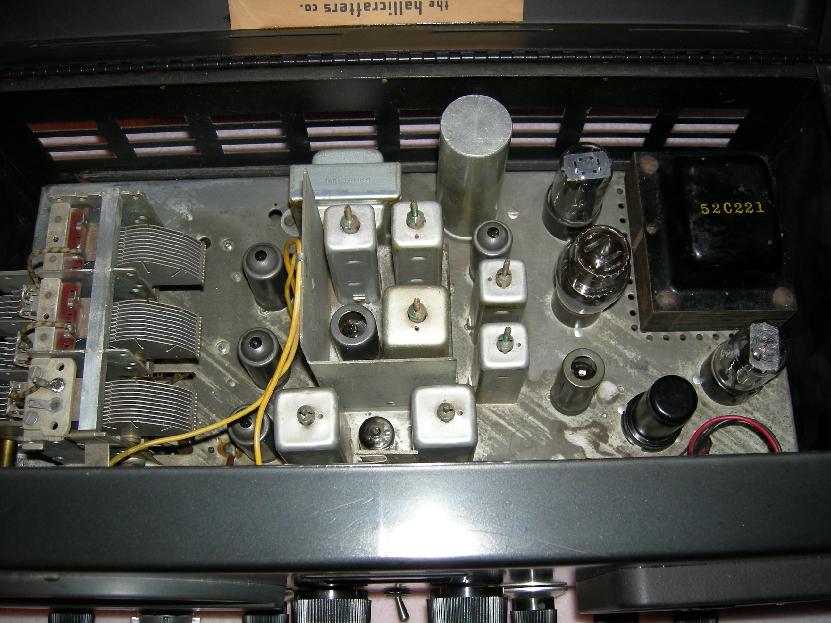
I restored this Hallicrafters S-76 Communications Receiver that was manufactured in 1952. The S-76 is a double conversion superheterodyne receiver with 10 tubes and It has an extremely large S-meter. This is a very easy S-meter to see.
Electronic Restoration
When I received this receiver it barely worked. When I started replacing the old wax capacitors, the local oscillator would come and go. Sometimes it would work, and other times it would not.
Once I got deeper into replacing the caps in the IF section, the receiver began to get more stable in operation. One of the paper capacitors actually had overheated and end of the cap was blown out. I always replace any capacitors exposed to direct line AC. If they have not failed yet, they will. I even removed the 2nd IF unit chassis off the main chassis to replace the wax capacitors in that chassis. I had to unwire the 2nd IF chassis so I could remove it completely from the main chassis. This was a lot of work, but I restore all my receivers to be very reliable and I want to use them regularly. So I replace all wax capacitors no matter how hard they are to reach.
Almost all the wax capacitors in old radios are leaky. When they are leaky, the capacitors will pass DC voltage where it does not belong. This can stress the power supply and other components.
Replacing the power supply electrolytics is a must because of the potential of catastrophic failure of the old electrolytics. It is not worth the risk to leave them in operation even if the receiver works well and they seem to work fine.
I replaced the power cord, added an in-line fuse under the chassis, and installed an inrush current limiter. Fuse protection on these older receivers is important to keep them from self-destructing f something should fail.
Tubes
The only tube that needed to be replaced was the 6SC7 BFO and AF amp. The AF amp section of the tube tested weak on a Hickok 750 tube tester. The 6K6 audio output tube has been replaced at some time in the past. It is common for the audio output tube to go bad before the other tubes. All the other tubes appear to be the original Hallicrafters tubes.
Cabinet Cleanup
Cosmetically the cabinet is in excellent condition, but the paint was in bad shape when I got it. Once the front panel was removed and everything cleaned and the paint reconditioned, I found that the paint was actually in great shape. The lettering on the front panel is remarkably good. This receiver does not show the normal signs of wear such as the lettering being worn off from heavy use.
This is a fun receiver to use, but I find it a bit touchy on the main tuning. I have to generally use the bandspread tuning to tune a shortwave station to the exact frequency. The main tuning is just a bit too coarse. The only other criticism I have of this receiver is the tuning feel. It does not have a flywheel and it feels chintzy.
Operation
The Hallicrafters S-76 Communications Receiver picks up stations easily and in fact if I turn off the AVC it tends to overload even on weak stations. I am using a 30-foot long wire antenna, which is probably why it tends to overload.
SSB reception is really not bad either. Turn off the AVC, turn down the Sensitivity, and select CW mode it actually will pick up SSB fairly well. The stability is pretty good for a receiver of this age.
The audio is pleasant for SE audio output and has enough audio power to sound strong without a lot of distortion. Overall this is a nice vintage receiver.
Contact me if you have a radio you want restored.
